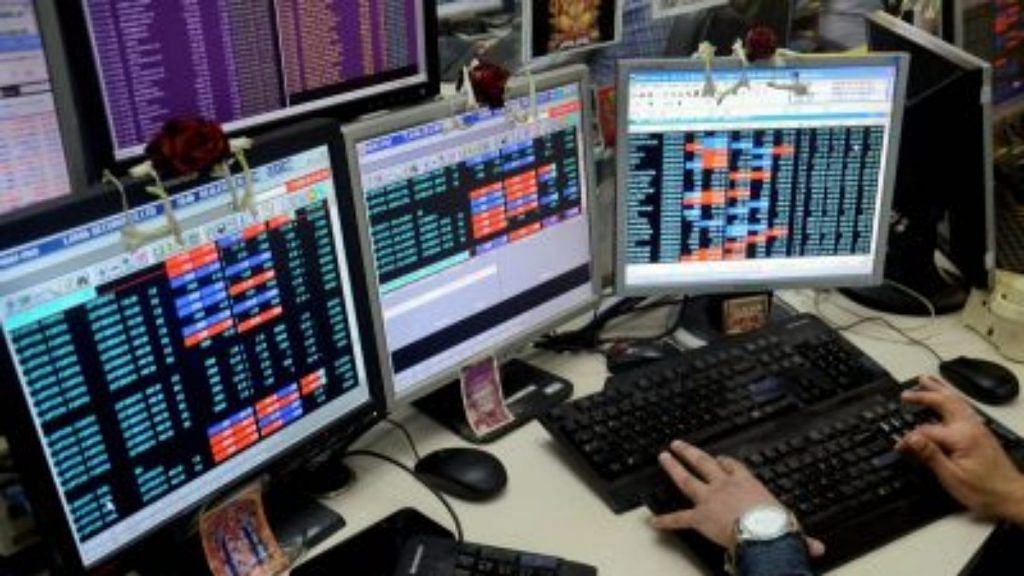Hong Kong/ Singapore: Bulls and bears remain at loggerheads about whether risk assets have hit a bottom. The following five “Ps” may provide an answer: pandemic, production, policies, positioning and prices.
Investors have fled emerging markets in record numbers since the outbreak of the coronavirus, even though central banks and governments have piled on stimulus to counter the impact of the deadly pathogen. While strategists at companies such as JPMorgan Chase & Co. have concluded that most risk assets have seen their low points, others at firms like Deutsche Bank AG say it’s too early to sound the all-clear.
The following charts may give an insight into the elusive turning point:
Pandemic
Markets have shown some signs of recovery now the rate of change in the global caseload has begun to ease. Seven-day growth slowed to about 107% as of March 31, from 123% on March 27, according to data from Johns Hopkins University. One caveat is that these numbers depend on the availability of testing kits and how infections are defined, while a number of epidemiologists have also suggested that once lockdowns are relaxed, the world will be at risk of rates of infection rising again.
Production
Markets appear to believe that global production has hit its nadir. During the global financial crisis, the MSCI World Index rebounded from its low even though the world economy was still contracting rapidly. The markets troughed when the JPMorgan Global PMI reading was around 36.8 on March 9, 2009. The key cause for optimism was that the rate of deterioration had abated. In the current situation, it does appear as if Chinese production is recovering more rapidly than economists forecast, for example.
The key difference now though is that there may be new waves of coronavirus infection once production resumes, which could lead to additional shutdowns. This makes the identification of a trough less meaningful, because the global recovery may stutter rather than enjoy a clear take-off path as it did after March 2009.
Also read: India’s budget is under strain on first day of new financial year
Policies
Policy makers in Group-of-10 nations have already reacted on a greater scale and more rapidly than they did during the global financial crisis. But for emerging markets especially, further policy convergence from the People’s Bank of China may be needed to stabilize the situation. As shown in the chart below, U.S. and Chinese policy became aligned fairly quickly during the global financial crisis. On this occasion however, China’s macro response continues to lag behind that of the U.S.
Positioning
The surge in foreign outflows from emerging Asian markets last month was unprecedented. The combined net foreign withdrawal from the stock markets of India, Indonesia, Malaysia, the Philippines, South Korea and Thailand climbed to a record. At the same time, the sales only amount to around 44% of the cumulative total reached during the period from August 2007 through February 2009, according to data compiled by Bloomberg.
Prices
As yet, stocks haven’t suffered the scale of declines they have seen in past recessions. The S&P 500 Index will fall to 2,000 but then rally to end the year around 3,000, according to David Kostin, Goldman Sachs Group Inc.’s chief U.S. equity strategist in New York. A more simplistic benchmarking of the decline in the index against the drawdowns that took place after 2000 and 2008 makes it appear that further downside is still possible.
Looking at the situation as a whole, the overwhelmingly most-important measure -– that of the rate of increase in the pandemic caseload — appears to vindicate the market’s rebound. So too does the very aggressive actions taken by global policy makers.
That said, there remains a significant risk of further waves of infection. Such episodes are likely to be met with further lockdowns and interruptions in production, and probably lead to further reduction in risk positioning and a further decline in prices.-Bloomberg
Also read: Stocks crash is once-in-a-decade buying chance for long-term investors: ICICI fund manager
